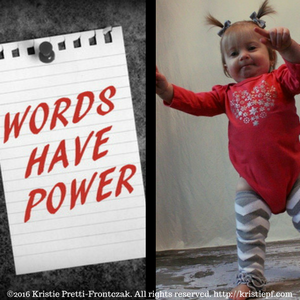 As we provide instruction, professional development, and learning to early childhood educators, we need to first and foremost be sure that we have done the inner work to then help others “use their words.”
As we provide instruction, professional development, and learning to early childhood educators, we need to first and foremost be sure that we have done the inner work to then help others “use their words.”
Now, you might be thinking….I use feeling words all the time…but do you use a wide variety?
Do you use a variety of feeling words that best meet a given situation?
Do you acknowledge when you or children have a negative feeling or do you try to “make it go away”?
Again, as we provide professional development and learning opportunities, we need to be sure that we have done the inner work necessary to then help others “use their words.” Meaning, we need to make sure that we are using a variety of feeling words, that we acknowledge the negative ones along with the positive, and that we encourage others to really take a minute to think about how they feel, particularly after a stressful meeting or day.
It’s all too easy to just say we are “fine,” or “busy,” or “overwhelmed”….when in fact we might be “weary,” or “anxious,” or maybe even “pulled in one too many directions.”
By better identifying (noticing and labeling) how we feel, we allow ourselves a moment and then the opportunity to take action and to regain a sense of balance, purpose, and efficacy. We begin to realize that the best way to address what we may perceive as challenging behavior (be that from children or other adults) is to first reflect on what about our own mood is causing us to react as we do; we can’t support others through a challenging emotional situation unless we have first ensured we have our own emotions under control.
Having and using a wide vocabulary of feeling words helps to improve our emotional intelligence (EQ). Having a high EQ allows us to more effectively monitor and guide our thinking and actions, as well as to support others (adults and children) in doing so. High EQ for adults is associated with more positive relationships, better job satisfaction, and less stress or burnout, while nurturing a high EQ in children is related to better attention span, empathy for others, sustained engagement in learning and activity, and stronger relationships (Tominey, O’Bryon, Rivers, & Shapses, 2017).
In other words, it is important that we nurture EQ in ourselves, the adults we train or work with, and in the children we serve.
Take away message (“tweetable”)
“Once we have done the inner work of noticing and acknowledging our own feelings, we can then help others, including children.“
P.S. For even more ideas on how to use feeling words effectively, check out this NAEYC article that describes why the use of a variety of feeling words are important. It includes the description of a “mood meter” you can use with both adults and children.
P.S.S. The Yale Center for Emotional Intelligence has even more resources to support you in building your EQ and that of others, including the evidence-based RULER (recognizing, understanding, labeling, expressing, and regulating emotion) approach.
References
Tominey, S., O’Bryon, E. C., Rivers, S. E., & Shapses, S. (2017). Teaching emotional intelligence in early childhood. Young Children, 72(1), 6-12.
